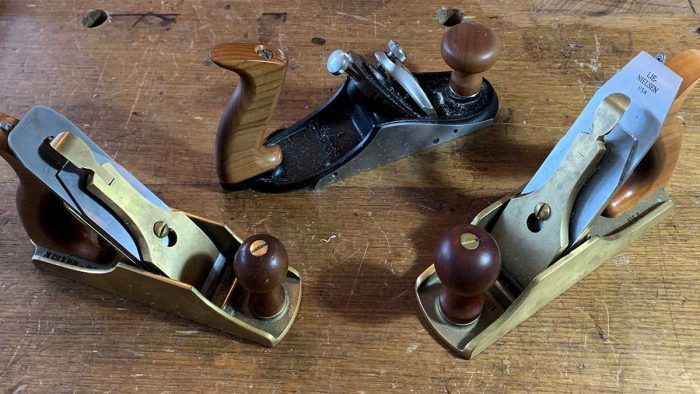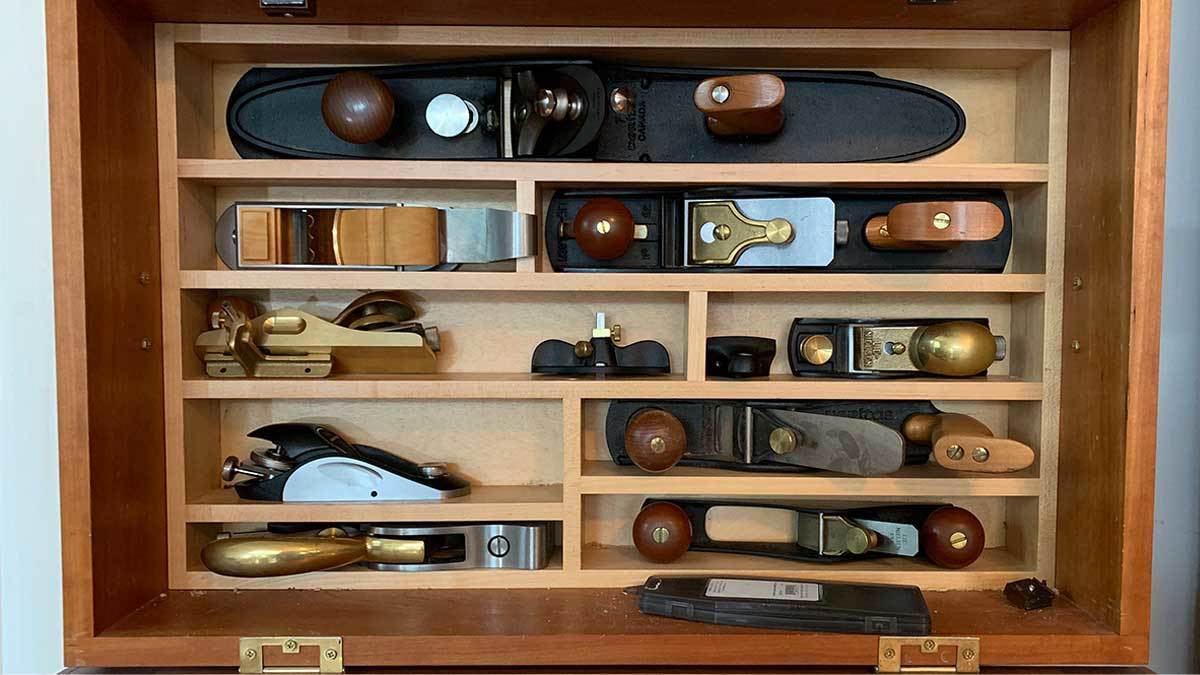Sometimes It’s Safe to Blame the Tool
Some tools are beyond help, no matter how much time is available to devote to them. Luckily, Megan Fitzpatrick hasn't had too many of those show up in her classes, but it does happen.
Among the more frustrating teaching challenges in a hand-tool class is dealing with tools that don’t work as they should (unless, of course, it’s a class in tool restoration). There is in almost every project class I’ve taught someone who has brought either:
- Grandfather’s tools: planes that—no matter how good they might have been at one time (and could be again)—haven’t met with a sharpening stone or daylight since 1950, when grandpa succumbed to the allure of newly affordable and available home-woodworker power tools (I might be speaking of my own grandfather)
- Planes and chisels picked up at a flea market or antique store, complete with original (pitted) irons, plastic handles, and a thick

This early no-name plane could be used as-is for carpentry work. The painted frog is not linished, so it’s impossible to solidly mate the iron to it. That makes it difficult to fine-tune this plane for furniture work. coating of rust
- A shiny new “smoothing plane” or “chisel” from a mass-market “tool” store
All of the above can be made to work, but it takes time. Crusty planes can be de-rusted, repainted, sharpened, and outfitted with new chipbreakers and blades when necessary, but there just isn’t enough time for that in a project class. If Day 1 starts off with planing up interior surfaces in preparation for dovetailing, it’s best to have a plane that’s ready to go, or at worst in need only of honing. Ditto when it comes time to chop out the waste. If you have to first go to the grinder to remove a nick in the business end of a chisel, you’ll fall behind.

At most of the places I teach, not-yet-ready for prime time tools are not a big problem. Most schools have at least a limited arsenal of loaner tools and many hand-tool woodworking schools provide a full set of sharp tools to every student, with freshly honed irons that are ready to use. But at the Lost Art Press storefront (which is but a part-time school . . . and in fact we call it “not a school”), we encourage you to bring your own tools; we think it’s beneficial to learn using the tools you’ll be using at home (especially the ones you’re likely to use a lot, including handplanes and dovetail saws), and we have a limited number of loaners. But if I replace your big-box plane with a tool from one of the “student” chests, please don’t take it personally. It just means I don’t have time to bring yours up to snuff in the 5 or fewer minutes I have available for such endeavors.
I know it’s a poor woodworker who blames the tools, and I know some excellent furniture makers who do incredible work with an incredibly lowly collection. But if you’re new to the craft and trying to learn, don’t put a roadblock at the start of your own path; outfit your kit with tools that can perform. If you can’t tune them yourself you have no reason to be ashamed, but consider a class in basic sharpening (and possibly tool restoration) before heading out to a weeklong cabinet or chairmaking class. If you’re near Cincinnati/northern Kentucky, come to the monthly open house at Lost Art Press; we’re happy to show you how to touch up your irons. See if a member of your local woodworking club or store can give you a lesson in honing. Attend a traveling tool show and ask for a sharpening demonstration.
Some tools are beyond help, no matter how much time is available to devote to them. Luckily, I’ve not had too many of those show up in my classes, but it does happen.
 There might be instructors who can make this “smooth plane” mechanism work well for students new to furniture work. I am not that instructor.
There might be instructors who can make this “smooth plane” mechanism work well for students new to furniture work. I am not that instructor.
















Comments
Holy crap! That plane looks like a spokeshave and a jackplane had a baby! Who would think that was a good idea?
The flip side of the old axiom, 'A good woodworker never blames his tools' is that a good woodworker never saddles himself with poor tools.
Ditto! There are planes that are for doing good work and all the rest. I am in no way a tool snob but... I learned early on that a poorly designed tool is anathema to good outcomes. You can buy the "right vintage" Stanley and make it sing or throw down some change and go for Lie-Nielsen or many of today's modern iterations of Bailey designs. And I also use a few of H.N.T. Gordon's oriental design tools and they work supremely well. The bottom line is to not tolerate a fool of tool. Learn the difference and develop good tool habits starting with learning how to put a proper edge on the tool quickly and how to keep it that way.
Log in or create an account to post a comment.
Sign up Log in